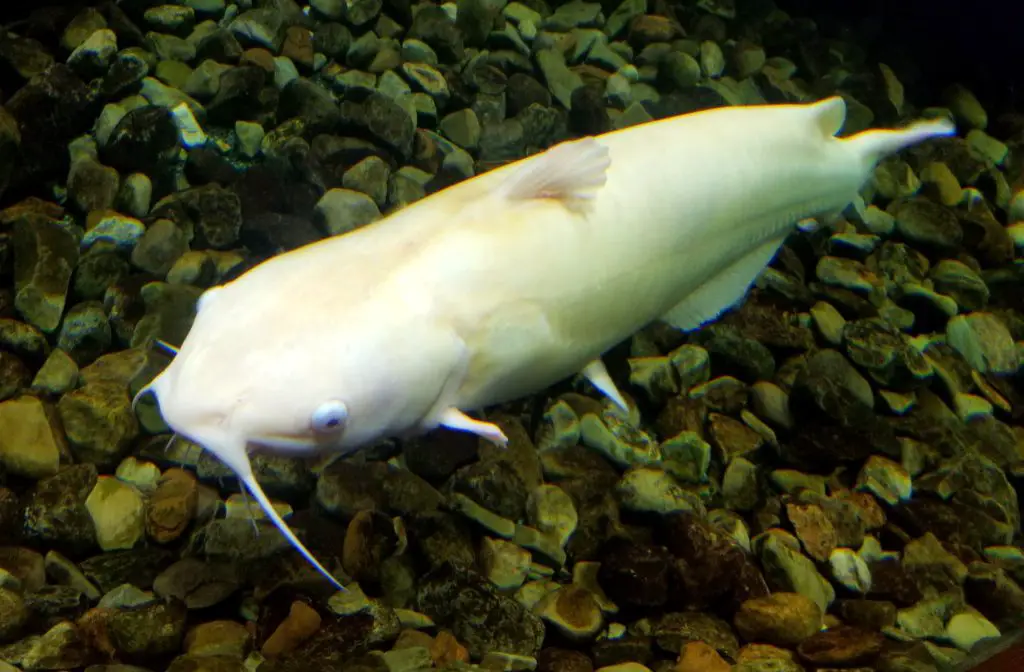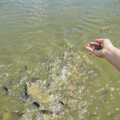Catfish are not generally bottom feeders, though some species of catfish mostly feed from the bottom. Catfish can’t also be called bottom dwellers, though they do spend quite a lot of time there. Catfish are a highly versatile group of fish, and their feeding habits are just one of the many examples of their diversity. To learn more about their relationship with the bottom, keep reading this article.
What does bottom feeder mean?
A bottom-feeding fish means that they stay at the bottom of their habitat most of the time and typically searches for food in the bottom area. Some species of fish are both bottom feeders and bottom dwellers, while some species stay in other parts of the water but come down to the bottom when it’s time to eat.
Bottom feeders can stay in freshwater or saltwater. There are bottom feeders starting from small ponds to deep oceans, like grouper. Their flat bodies (ventral region) usually have the ability to bury themselves in the bottom, so they can often be found hiding underneath the mud.
The anatomy of bottom feeders enables them to be bottom feeders. Their mouths are shaped in such a way that they can easily collect food from the bottom. It’s sloped downwards so that they can lean towards the floor and collect the food from there.
Bottom feeding behavior is also seen in crustaceans, like crabs, some phytoplankton and zooplankton. Not all bottom feeders have the same diet, either. Some bottom feeders specifically feed on dead organic materials present on the floor. They are all detritivores.

Are catfish bottom feeders?
Most catfish aren’t bottom feeders, but certain species are. The anatomy of catfish might be quite like that of bottom feeder fishes, but most catfish are capable of gaining food from other parts of the water.
Again, some catfish don’t feed from the bottom but stay near the bottom sometimes. Especially during the day, most catfish linger near the bottom and have their bodies covered in mud. As the day progresses and night comes, they slowly move upwards and may even appear to float on the surface.
For other reasons, catfish may come to the bottom. If they are eyeing a smaller fish to hunt for food, they might follow the smaller fish to the bottom, where it will be easier to attack. Again, seasonal changes can influence their position in the water, as the temperature of the water changes depending on it.
On hot summer days, the upper layer of the water becomes hot due to the heat of the sun. When this happens catfish will move towards the bottom to stay cool. On cold days of winter as well, they stay in deeper parts of the water because there the layer heats up slowly. In other words, the bottom is cool in summer and warm in winter, which adheres to the catfish’s preference for temperate waters.
What do bottom feeder catfish eat?
Catfish are omnivores, so their diet is quite diverse. The diet of catfish, from species to species as well as location to location, can vary to a great extent. Bottom-feeding catfish will eat almost everything available at the bottom as long as it can fit into their mouth. However, differences in food preferences are noted among the few bottom-feeding catfish.
For example, some bottom-feeding catfish lean more towards the detritivorous side. As in, they will feed mostly on dead organic materials that they come across at the bottom. Scavenged debris from other living organisms is their favorite.
Some bottom-feeding catfish will eat plants and different types of algae that grow on the floor. Others are mainly predatory and feed on other bottom-feeding animals, including smaller fish species and crustaceans, and that’s not all. Sometimes, plant materials from land can end up at the bottom of the water body. This includes seeds, fruits, and grains. Bottom-feeding catfish will gladly gobble those up as well.
How do catfish detect food?
A catfish gets its name from cats, who have whiskers. Catfish, too, have whisker-like projections around their mouths, called barbels. These barbels are extensions of their olfactory senses, and they can get a sense of both smell and touch through them. Some consider barbels the same as tongues for humans; they work as the taste buds of catfish.
Hence, these same barbels play a big role when a catfish goes hunting for food. Their olfactory senses are pretty strong, so they will easily smell worthy prey or desired food sources nearby. If they are unsure about whether something is edible or not, they can use their barbels to get a brief taste of it before coming to a decision.
The feeding strategies of catfish can differ based on their mood. Sometimes they will stay at a single spot and wait for prey to come near them. Other times, they will actively go searching for potential food sources.
Do catfish stay at the bottom?
No, they don’t stay at the bottom at all times. They only stay there when they need to. In other words, they don’t have to come to the bottom and stay there specifically for the need for food. They will only come to the bottom when they feel like there will be an advantage. Calling them bottom feeders or even bottom dwellers won’t be entirely correct.
Catfish will come to the bottom because it’s often a good place to attack their prey. There are loads of hiding spots available where they can stay and wait to catch the prey off-guard. The bottom is the best place for them during hot summers and cold winters. At other times, however, they will be active throughout the water, spreading in random places instead of sticking to the bottom.
In conclusion, the bottom is like a friend with benefits for catfish. Most catfish will only come to the bottom when it suits their needs. So, while it’s not entirely wrong to call them bottom feeders or dwellers, it’s not entirely right either.












Pingback: Do Catfish Like to Be Petted? | Reel Fishing Guru
Pingback: Can You Eat Catfish Skin? | Reel Fishing Guru
Pingback: Catfish and Perch: Key Differences | Reel Fishing Guru
Pingback: Can a Catfish Jump Out of Water? | Reel Fishing Guru
Pingback: Do Catfish Like Bread? | Reel Fishing Guru
Pingback: What is Tight Line Fishing for Catfish? | Reel Fishing Guru
Pingback: Are Catfish Good for a Pond? | Reel Fishing Guru
Pingback: Will a Catfish Eat Gar? | Reel Fishing Guru
Pingback: Will A Catfish Eat Frogs? | Reel Fishing Guru
Pingback: What Is the Difference Between Catfish and Pollock? | Reel Fishing Guru
Pingback: What is the Difference Between Catfish and Lake Trout: A Clear Explanation | Reel Fishing Guru
Pingback: What is the Difference between Catfish and White Bass? | Reel Fishing Guru